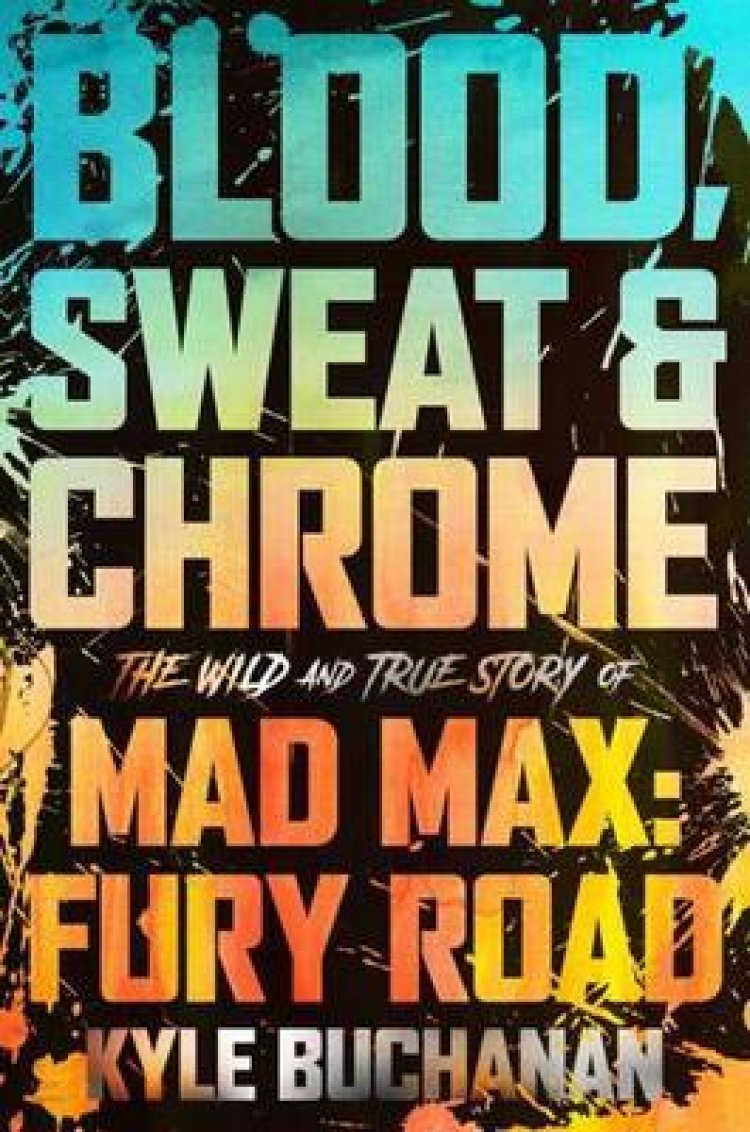Blood, Sweat & Chrome Offers Full, Fascinating History of Mad Max: Fury Road
“If I’m the guy who ends up in a wheelchair in the nursing home, staring at the ceiling, I’ve told my family you can bet I’m making some movie in my head.” – George Miller, Blood, Sweat & Chrome: The Wild and True Story of Mad Max: Fury Road “Mad Max: Fury Road” feels impossible. It’s a movie that shouldn’t exist. It’s a sequel to a franchise that had been long dormant; a blockbuster that’s somehow equally intellectual and instinctual; an oasis of groundbreaking stunt work in the desert of CGI; a major Oscar winner that could have also won an imaginary Most Popular Film award. Named on hundreds of lists of the best films of the 2010s, including ours, it is a black swan, a film that feels like nothing else. And, like so many classics, it almost never happened. The movie in George Miller’s head that exploded onto screens in 2015 has one of the most tumultuous and controversial routes to existence in movie history, and Kyle Buchanan, the ace journalist for the New York Times has unpacked every aspect of its production in his excellent Blood, Sweat & Chrome, an oral history of a masterpiece that hums with the same creative passion as the film legacy it documents. Buchanan lets the people who were there tell the story of “Fury Road,” arranging most of his book like an oral history piece with quotes from the players involved. This is one of those structures that could be filed under “harder than it looks.” It’s more than just arranging quotes and sound bites—the artistry is in the assembly. There’s a flow to the construction of “Blood, Sweat & Chrome” that makes it such an addictively quick, easy read. It’s easy to collect anecdotes, but it takes skill to give coherent momentum to people’s memories and insights. Buchanan is a smart writer, and he puts his book together like a film director assembling the many elements of a complex production like the one he chronicles here. And I do mean complex. I knew a lot of the stories behind the scenes of “Mad Max: Fury Road,” but it was just the tip of the iceberg. For example, I didn’t know (or at least remember) how incredibly long “Fury Road” had been in some state of production, with roots that go back to a failed TV series in the mid-‘90s. Back then, ideas were already being floated around George Miller that would make their way into the film two decades later. And, of course, everyone’s heard the stories of the nightmare shoot, but hearing from actual cast members like Tom Hardy, Charlize Theron, Riley Keough, and many more adds weight to the legacy of this film. It helps that Buchanan got everyone to talk, and at just the right time—with enough road behind them to put the events in a different context but not enough that any of their memories have been diminished. There’s a lesser version of the book that doesn’t get Miller or Theron but pushes forward anyway. And there’s something perfect about this timing with Furiosa about to really hit the road. I just hope Buchanan ends up writing the book on that one too. Get your copy here.


“If I’m the guy who ends up in a wheelchair in the nursing home, staring at the ceiling, I’ve told my family you can bet I’m making some movie in my head.” – George Miller, Blood, Sweat & Chrome: The Wild and True Story of Mad Max: Fury Road
“Mad Max: Fury Road” feels impossible. It’s a movie that shouldn’t exist. It’s a sequel to a franchise that had been long dormant; a blockbuster that’s somehow equally intellectual and instinctual; an oasis of groundbreaking stunt work in the desert of CGI; a major Oscar winner that could have also won an imaginary Most Popular Film award. Named on hundreds of lists of the best films of the 2010s, including ours, it is a black swan, a film that feels like nothing else. And, like so many classics, it almost never happened. The movie in George Miller’s head that exploded onto screens in 2015 has one of the most tumultuous and controversial routes to existence in movie history, and Kyle Buchanan, the ace journalist for the New York Times has unpacked every aspect of its production in his excellent Blood, Sweat & Chrome, an oral history of a masterpiece that hums with the same creative passion as the film legacy it documents.
Buchanan lets the people who were there tell the story of “Fury Road,” arranging most of his book like an oral history piece with quotes from the players involved. This is one of those structures that could be filed under “harder than it looks.” It’s more than just arranging quotes and sound bites—the artistry is in the assembly. There’s a flow to the construction of “Blood, Sweat & Chrome” that makes it such an addictively quick, easy read. It’s easy to collect anecdotes, but it takes skill to give coherent momentum to people’s memories and insights. Buchanan is a smart writer, and he puts his book together like a film director assembling the many elements of a complex production like the one he chronicles here.
And I do mean complex. I knew a lot of the stories behind the scenes of “Mad Max: Fury Road,” but it was just the tip of the iceberg. For example, I didn’t know (or at least remember) how incredibly long “Fury Road” had been in some state of production, with roots that go back to a failed TV series in the mid-‘90s. Back then, ideas were already being floated around George Miller that would make their way into the film two decades later. And, of course, everyone’s heard the stories of the nightmare shoot, but hearing from actual cast members like Tom Hardy, Charlize Theron, Riley Keough, and many more adds weight to the legacy of this film.
It helps that Buchanan got everyone to talk, and at just the right time—with enough road behind them to put the events in a different context but not enough that any of their memories have been diminished. There’s a lesser version of the book that doesn’t get Miller or Theron but pushes forward anyway. And there’s something perfect about this timing with Furiosa about to really hit the road. I just hope Buchanan ends up writing the book on that one too.




















